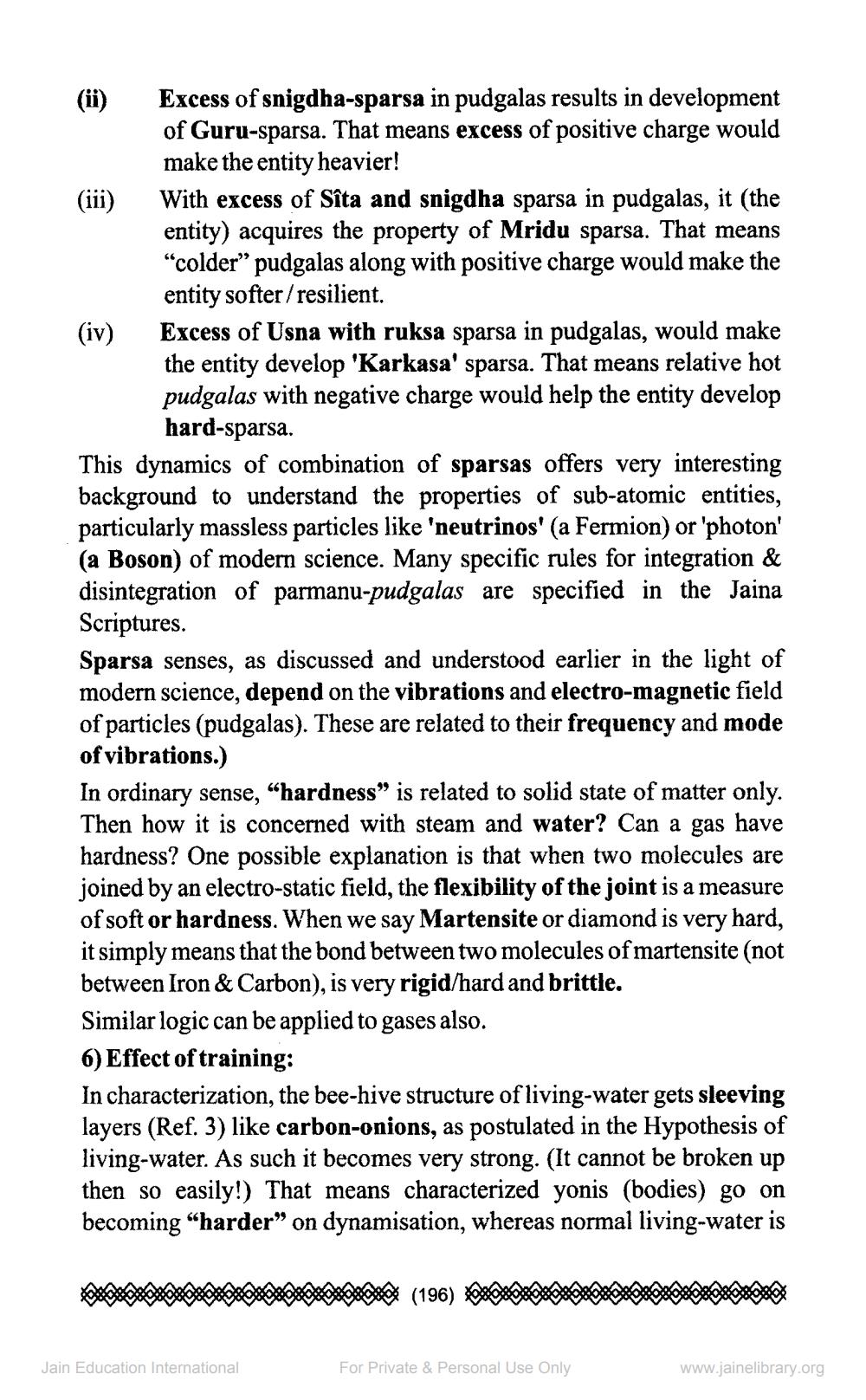________________
(ii) Excess of snigdha-sparsa in pudgalas results in development
of Guru-sparsa. That means excess of positive charge would
make the entity heavier! (iii) With excess of Sîta and snigdha sparsa in pudgalas, it (the
entity) acquires the property of Mridu sparsa. That means "colder" pudgalas along with positive charge would make the
entity softer/resilient. (iv) Excess of Usna with ruksa sparsa in pudgalas, would make
the entity develop 'Karkasa' sparsa. That means relative hot pudgalas with negative charge would help the entity develop
hard-sparsa. This dynamics of combination of sparsas offers very interesting background to understand the properties of sub-atomic entities, particularly massless particles like 'neutrinos' (a Fermion) or 'photon' (a Boson) of modern science. Many specific rules for integration & disintegration of parmanu-pudgalas are specified in the Jaina Scriptures. Sparsa senses, as discussed and understood earlier in the light of modern science, depend on the vibrations and electro-magnetic field of particles (pudgalas). These are related to their frequency and mode of vibrations.) In ordinary sense, “hardness" is related to solid state of matter only. Then how it is concerned with steam and water? Can a gas have hardness? One possible explanation is that when two molecules are joined by an electro-static field, the flexibility of the joint is a measure of soft or hardness. When we say Martensite or diamond is very hard, it simply means that the bond between two molecules of martensite (not between Iron & Carbon), is very rigid/hard and brittle. Similar logic can be applied to gases also. 6) Effect of training: In characterization, the bee-hive structure of living-water gets sleeving layers (Ref. 3) like carbon-onions, as postulated in the Hypothesis of living-water. As such it becomes very strong. (It cannot be broken up then so easily!) That means characterized yonis (bodies) go on becoming “harder” on dynamisation, whereas normal living-water is
Jain Education International
For Private & Personal Use Only
www.jainelibrary.org




